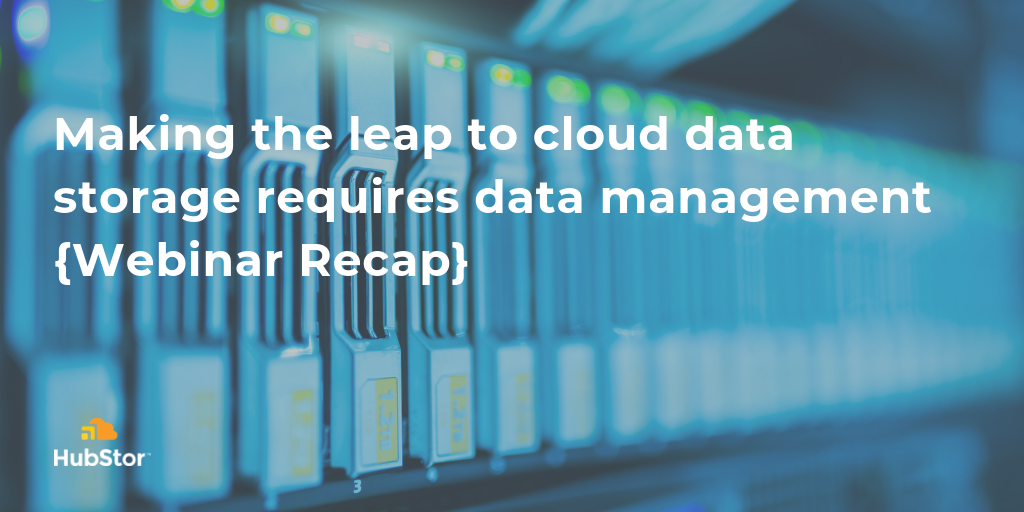According to a recent study completed by Osterman Research (sponsored by HubStor and Microsoft), only 14% of companies have moved from on-premises data centers to cloud data storage.
This isn’t terribly surprising as we heard in last week’s webinar, hosted by George Crump of Storage Switzerland. Geoff Bourgeois, HubStor CEO, and Michael Osterman of Osterman Research joined George for an interesting discussion of the implications from this research.
Data center transformation isn’t a straightforward process
Right off the bat, the discussion jumped into how many companies have completed their data center transformation and how many haven’t.

The survey results show that 59% indicate they’re not started or only partly there. But an important point was raised about how different companies define data center transformation. Some may be moving to cloud-based productivity but may not consider that effort to be part of an overall storage transition.
Ultimately, with a concept as big as data center transformation, there are a lot of moving parts and some aspects can present unique challenges to making them work in the cloud. Most notably, when it comes to applications that have to somehow be decoupled from the hardware.
Just how much data is inactive?
Surprisingly, not as much as anyone would have expected. However, this graph would likely skew the other direction if infrequently accessed data had been included in the mix, along with some clarification around whether the data is available or not.

There’s a lot of opportunity to mine infrequently accessed and inactive data for valuable insights, but many organizations aren’t there yet with the infrastructure and tools they have in place.
What we’re seeing with consistency at HubStor is data tends to be accessed infrequently beyond the sixty-day mark.
Where is all that inactive data being stored?
Surprisingly, quite a few respondents indicated public cloud (25%) and high-performance primary storage (26%) were used for inactive data. This is a great opportunity to optimize storage and experience cost savings within the IT budget by moving to a cost-effective secondary storage solution in the cloud.
Everyone needs more storage space, so how do they get it?
Well, since there’s a perception that buying more disk space is the easiest and cheapest route, this decision isn’t usually part of an overall data management strategy.

More disk space doesn’t solve the underlying data problem. But taking this step is often borne of a conflict between IT, which has to manage capacity, and business units that have to decide what actually happens to the data and how it’s going to be used.
The need for capacity and a range of capabilities that allow agile, flexible data management exist in the cloud in ways IT can’t leverage with traditional on-prem data centers.
The future of storage is in the cloud
As more and more of the tools we use every day are available in or sync to the cloud, organizations know it’s inevitable that they’ll be using the cloud. And the results of the survey bear that out:

One strong motivation for this move to the cloud is allowing IT to be freed up from data center management tasks to take on higher value tasks that benefit the organization.
The benefits of moving to cloud storage
There’s a tendency for cloud to have a reputation for being a backup/disaster recovery vehicle, but the results of the survey really show that the view is expanding to more financial and functional opportunities that will benefit IT and the organization as a whole.

Watch the full webinar!
This was a great conversation about how IT and organizations view the cloud as a storage option and what we can expect over the coming years as more organizations move away from traditional on-premises data centers.
The shift is coming and you can learn more from the insights shared by George Crump, Geoff Bourgeois, and Michael Osterman in the on-demand webinar here.


